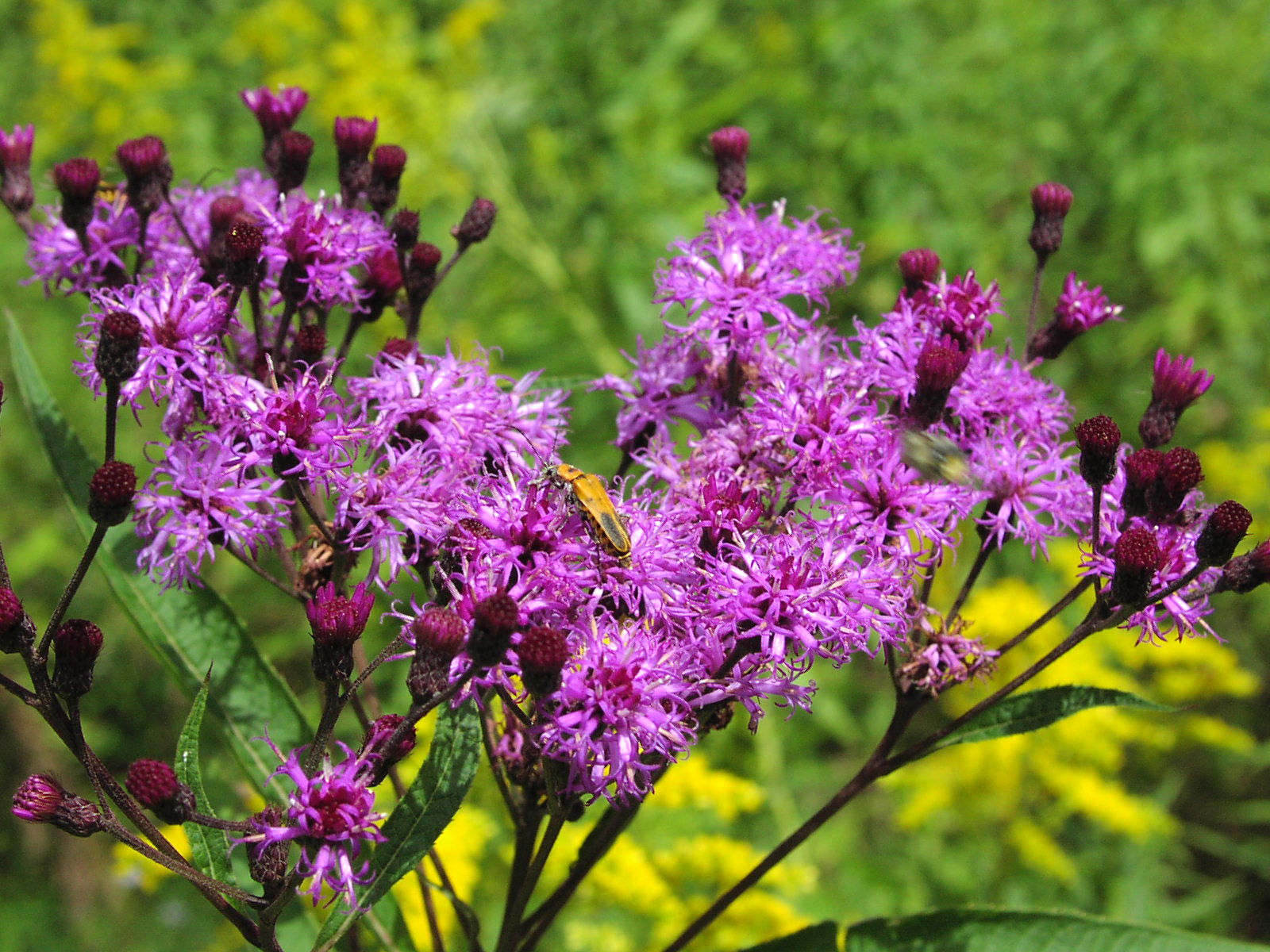As gardeners, we are always looking ahead and planning for the future, perhaps with less maintenance in mind or the possibility of the limitation of resources. One very real consideration is water availability and quality. There are already summer watering restrictions in many communities. A bottle of water is as common as a bottle of soda. Sometime in the not too distant future, water may be scarce. Perhaps that day is on our doorstep now so the prudent gardener is making new plant decisions accordingly. Looking to native plants is a good place to start.
Ironweed is a native prairie flower from the western United States. It is at home in moist to wet meadows and those that dry out as the season progresses. A member of the aster family, ironweed is known botanically as vernonia. The common name “Ironweed” originates from the toughness of the plant, especially the stem, which has an ability to persist through the winter. Also, the rusty color of the dry seed heads is reminiscent of the metal iron as it oxidizes. The western ironweed, known as Vernonia fasciculate, is a favorite of butterflies. This ironweed grows 4-6 feet tall and produces flowers resembling crimson torches in the late summer. This zone 4 prairie beauty adapts well to cultivation, as it never looks untidy in the garden. Combine it with goldenrod for a late season punch of color.
Tall Ironweed, Vernonia altissima, prefers a more moist location, full sun to part shade, and it attains 5-8 feet. Often termed the showiest of all the ironweeds as brilliant reddish-pink flowers cover the plant in August and September, this magnificent plant would be at home in the back of the border as well as the meadow. Butterflies cannot resist the flowers, so it is a must for butterfly gardens.
The seed heads for Vernonia gigantea are very attractive until mid-autumn when they begin to disperse by the “fluff and fly” method, each seed having its own parasol to take it wherever the wind will carry it. Mother Nature has many ways to ensure that the species will go on! This ironweed is most likely found in old fields and along roadsides. Also found in many of these same dry places but also in heavily grazed pastures and open upland sites throughout Kansas is another type of western ironweed known as Vernonia Baldwinii. Flowering July through September, this is a shorter ironweed at 2-5 feet but it, too, has showy florets of lavender and purple. While this plant is not consumed by cattle due to its bitter taste, sheep will eat it. Because of its sturdy stature, this ironweed is often used for riparian edge repair. Considering its heritage, it would be right at home in an area that might flood in the early spring but dry out considerably by the end of the season.
Saving the best for last, Vernonia noveboracensis or the New York Ironweed is found in zones 5-8, grows to 3-7 feet, and bears clusters of purple flowers from August to October. This ironweed prefers a full sun location and a well drained soil, making it another perennial border choice. There is something reminiscent of Joe-Pye weed, but this ironweed is a bit more open and the stalks are more slender. As with the other ironweeds, the New York variety shines as summer winds down and it, too, is a favorite for butterflies. While in nature it is found along stream banks and wet meadows, it is at home in the back of the border or in a wildflower meadow. Once established, it can grow even in drought areas and besides being a nectar source, it is a larval host for the American Lady butterfly, Vanessa virginiensis. Despite its common name, the New York ironweed is found throughout the eastern United States, from New York in the north to Florida in the south and Tennessee to the west. So impressive as a desirable native perennial, Vernonia noveboracensis was named the 2004 North Carolina Wildflower of the Year. Why not consider this native beauty for your New York garden?
Susan Pezzolla, Master Gardener Coordinator, Horticulture Educator. Cornell University Cooperative Extension. 24 Martin Road, Voorheesville, NY.




